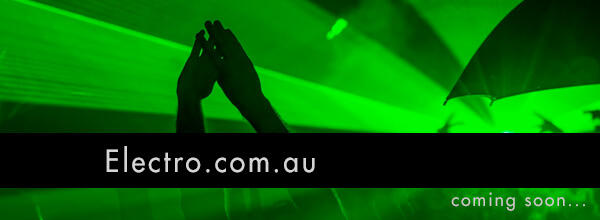
Electronic music is a genre of music that employs electronic musical instruments, digital instruments, or circuitry-based music technology in its creation. It includes both music made using electronic and electromechanical means (electroacoustic music). Pure electronic instruments depended entirely on circuitry-based sound generation, for instance using devices such as an electronic oscillator, theremin, or synthesizer. Electromechanical instruments can have mechanical parts such as strings, hammers, and electric elements including magnetic pickups, power amplifiers and loudspeakers. Such electromechanical devices include the telharmonium, Hammond organ, electric piano and the electric guitar.
The first electronic musical devices were developed at the end of the 19th century. During the 1920s and 1930s, some electronic instruments were introduced and the first compositions featuring them were written. By the 1940s, magnetic audio tape allowed musicians to tape sounds and then modify them by changing the tape speed or direction, leading to the development of electroacoustic tape music in the 1940s, in Egypt and France. Musique concrète, created in Paris in 1948, was based on editing together recorded fragments of natural and industrial sounds. Music produced solely from electronic generators was first produced in Germany in 1953. Electronic music was also created in Japan and the United States beginning in the 1950s and Algorithmic composition with computers was first demonstrated in the same decade.
During the 1960s, digital computer music was pioneered, innovation in live electronics took place, and Japanese electronic musical instruments began to influence the music industry. In the early 1970s, Moog synthesizers and Japanese drum machines helped popularize synthesized electronic music. The 1970s also saw electronic music begin to have a significant influence on popular music, with the adoption of polyphonic synthesizers, electronic drums, drum machines, and turntables, through the emergence of genres such as disco, krautrock, new wave, synth-pop, hip hop, and EDM. In the early 1980s mass-produced digital synthesizers, such as the Yamaha DX7, became popular, and MIDI (Musical Instrument Digital Interface) was developed. In the same decade, with a greater reliance on synthesizers and the adoption of programmable drum machines, electronic popular music came to the fore. During the 1990s, with the proliferation of increasingly affordable music technology, electronic music production became an established part of popular culture. Contemporary electronic music includes many varieties and ranges from experimental art music to popular forms such as electronic dance music. Pop electronic music is most recognizable in its 4/4 form and more connected with the mainstream than preceding forms which were popular in niche markets.
Techno is a genre of electronic dance music which is generally produced for use in a continuous DJ set, with tempo often varying between 120 and 150 beats per minute (bpm). The central rhythm is typically in common time (4/4) and often characterized by a repetitive four on the floor beat. Artists may use electronic instruments such as drum machines, sequencers, and synthesizers, as well as digital audio workstations. Drum machines from the 1980s such as Roland's TR-808 and TR-909 are highly prized, and software emulations of such retro instruments are popular.
Much of the instrumentation in techno emphasizes the role of rhythm over other musical parameters. Techno tracks mainly progress over manipulation of timbral characteristics of synthesizer presets and, unlike other forms of EDM, that tend to be produced with synthesizer keyboards, techno does not always strictly adhere to the harmonic practice of Western music and such structures are often ignored in favor of timbral manipulation alone. Another distinguishing feature of techno music and techno aesthetic is the general embracement of creative use of music production technology.
Use of the term "techno" to refer to a type of electronic music originated in Germany in the early 1980s. In 1988, following the UK release of the compilation Techno! The New Dance Sound of Detroit, the term came to be associated with a form of EDM produced in Detroit. Detroit techno resulted from the melding of synth-pop by artists such as Kraftwerk, Giorgio Moroder and Yellow Magic Orchestra with African American styles such as house, electro, and funk. Added to this is the influence of futuristic and science-fiction themes relevant to life in American late capitalist society, with Alvin Toffler's book The Third Wave a notable point of reference. The music produced in the mid-to-late 1980s by Juan Atkins, Derrick May, and Kevin Saunderson, along with Eddie Fowlkes, Blake Baxter, James Pennington and others is viewed as the first wave of techno from Detroit.
After the success of house music in a number of European countries, techno grew in popularity in the UK, Germany, Belgium and the Netherlands. In Europe regional variants quickly evolved and by the early 1990s techno subgenres such as acid, hardcore, bleep, ambient, and dub techno had developed. Music journalists and fans of techno are generally selective in their use of the term, so a clear distinction can be made between sometimes related but often qualitatively different styles, such as tech house and trance.